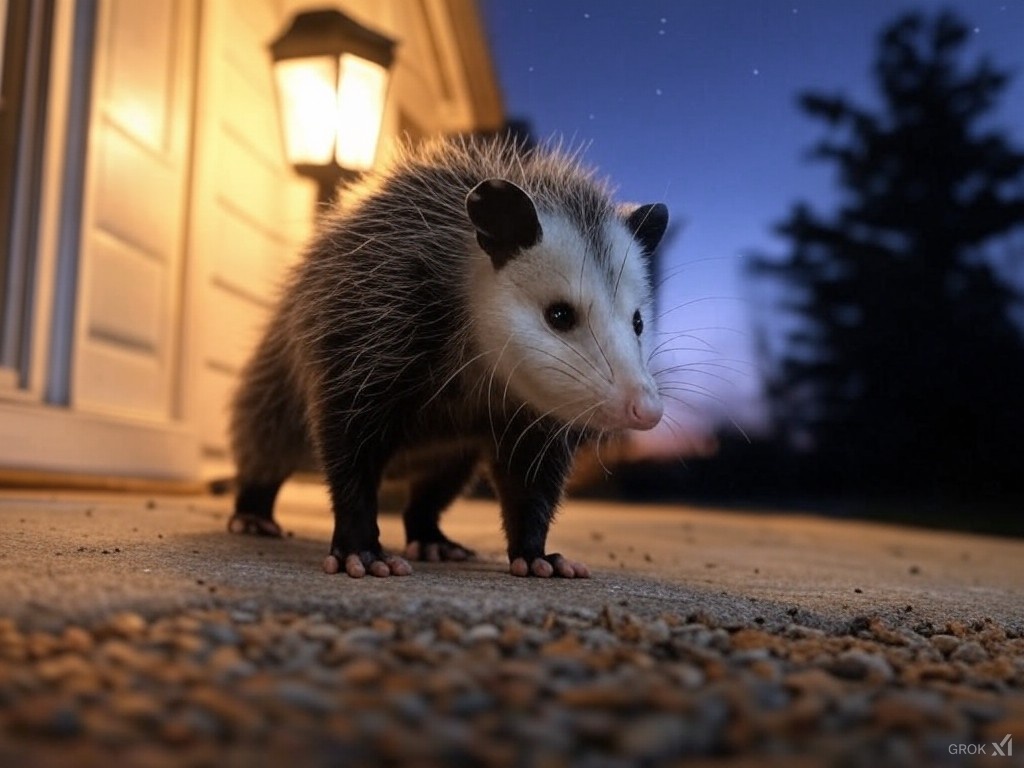Opossums, while generally less destructive than some other wildlife, can still cause various types of damage around a house. Opossum trapping is done with baited cage traps.

Here’s a breakdown of the potential issues:
Structural Damage:
- Entry Points:
- Opossums can squeeze through surprisingly small openings to get into attics, crawl spaces, or under decks. They might enlarge existing holes or gaps, compromising the structural integrity or insulation.
- Nesting:
- Once inside, they might tear insulation or other materials for nesting, which can reduce energy efficiency and cause noise.
Property Damage:
- Garden and Landscape:
- Vegetation: They eat a wide variety of fruits, vegetables, and flowers, potentially damaging gardens.
- Composting: Opossums are attracted to compost for insects and food scraps, leading to overturned bins.
- Trash and Pet Food:
- They can rummage through garbage, creating a mess and spreading trash around the yard.
- Ponds or Water Features:
- If you have fish ponds, opossums might eat the fish or disturb the ecosystem.
Health and Hygiene Issues:
- Disease Transmission:
- Opossums can carry diseases like leptospirosis, tuberculosis, or parasites such as fleas or ticks. Their waste can introduce these pathogens into living areas.
- Waste and Odor:
- Their droppings and urine can accumulate in areas where they nest, leading to bad smells and potential health hazards.
Additional Concerns:
- Noise: While generally quieter than some pests, opossums can make scratching noises or vocalizations, especially at night.
- Food Storage: They might store food in various places, attracting other pests or leading to mold growth if food rots.
- Electrical Damage: Though less common, opossums might chew on wires or cables if they find them in their path.
Mitigation:
- Secure Entry Points: Seal all potential entry points to attics, crawl spaces, or under structures. Use hardware cloth or similar materials.
- Trash Management: Use secure trash bins that opossums can’t easily open.
- Remove Attractants: Pick up fallen fruit, secure pet food, and manage compost to make your yard less inviting.
- Trapping: If opossums are already inside, cage traps can be used for relocation, though check local laws as opossums might be protected in some areas.
- Deterrents: Motion-activated lights or sprinklers might deter opossums, though they can adapt to these over time.
While opossums do provide some benefits, like eating pests, their presence around a home can lead to several inconveniences. They’re generally not aggressive, but their foraging behavior can lead to the issues mentioned above. Managing opossum presence involves making the environment less hospitable to them while ensuring humane treatment.
